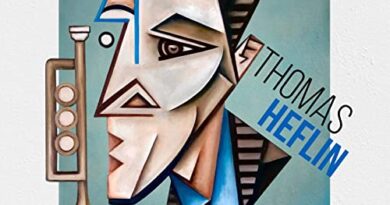What Golf Taught Me About Being A Musician
Editor’s Note: This was originally published on Scott Moore’s Facebook page and has been reposted in its entirety on Last Row Music with Scott’s permission. Scott is the Principal Trumpet of the Memphis Symphony Orchestra.
After five days straight of watching the greatest golfers in the world at the WGC FedEx-St Jude Invitational Golf Tournament [July 25-28, 2019], I have learned a lot, and have been newly inspired.
But not like you’d think.
Most people ask if watching them helps me with my golf game. I suppose that it’s good to be reminded that pros miss short putts too, but the game they play is so different from the one I play that I would be delusional to try to emulate those guys on the golf course.
Where I CAN emulate them is in what I do best: playing the trumpet. Most upper-level professional golfers have routines and performance characteristics that transfer very well to trumpet-playing and music performance in general.
DAILY EMPHASIS ON FUNDAMENTALS: Every pro on the driving range begins by working on alignment, grip, posture, stance, swing plane, etc., assisted by alignment aids and the best technology available. It’s a fantastic reminder that fundamentals are not something to be learned and then checked off of a to-do list—they are a daily endeavor. And that we should monitor our routine and progress with some of the myriad of technological tools available to musicians.
PRACTICE WITH A PURPOSE: Pros work through their entire golf bag, hitting several different types of shots with each club, so they are prepared for every type of shot they will have to hit on the golf course. They do not avoid the things they are uncomfortable with, but rather work to turn their weaknesses into strengths.
HIT THE SWEET SPOT: There is an unmistakable difference in the sound of a professional hitting a golf ball. When the sweet spot of a club makes contact with the golf ball, the ball goes farther and straighter with less effort. Likewise, in all musical instruments, there is a sweet spot, where the instrument naturally is more resonant and lively. When we consistently hit that spot, we achieve a more beautiful, resonant, projecting tone with less effort.
VISUALIZE SUCCESS: Before every shot, pros stand behind the ball and “see” the shot they are about to make in their mind. They envision the flight of the ball and its landing area. They are skilled at thinking about what can go right, and eliminating thoughts about what can go wrong. How can we play something beautifully if we do not first hear it that way in our heads?
PLAY SMART: Pros always have a plan. They know where to aim their shot, in order to have a good angle on their next shot. They never take unnecessary risks. They are always thinking ahead, never behind.
ATTENTION TO DETAIL: Pros factor in every conceivable variable before hitting a shot: the exact distance, the wind, the temperature, the grain of the grass, the lie from which they will make their shot, etc. Musicians have so much information available to us in the way of dynamics, articulation, note length, etc. Too often, those details are not given the full attention that the music deserves.
DO NOT LET MISTAKES DERAIL YOU: Every single pro makes mistakes. But the worst outbursts of temper I saw were nothing compared to those I see from amateurs on public golf courses on a regular basis (yours truly included). For the pros, a missed putt can cost them tens of thousands of dollars. So what do I have to get angry about? Pros will be momentarily irritated, then immediately begin thinking of their next shot. Their ability to remain focused despite having made a huge mistake, or getting a bad break, is awe-inspiring. How many musical performances have gone downhill quickly when a musician gets angry at a mistake, and then mistakes begin coming in faster and faster? This ability to remain unflappable is also related to:
DO NOT LET YOUR SUCCESSES DESTROY YOUR FOCUS: Even after making an amazing shot or draining a long birdie putt, pros will respond to the crowd with a brief hat tip or wave of the hand. They are already thinking about the next hole, and the shot they will hit from the tee box. As trumpet players say, “The hardest note is the one after the high note.” Loss of focus is deadly.
GOLF IS HARD: no need to explain the similarity here.




